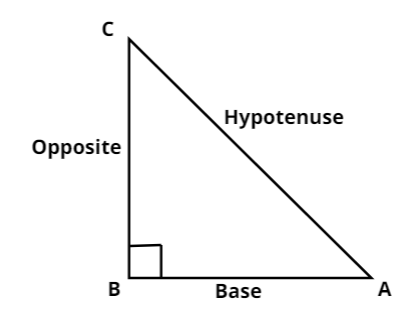
Parallel sides of trapezium are 60 and 77. Other sides are 25 and 26. Find the area.
Answer
472.5k+ views
Hint: In this question first we have to draw the diagram and then measure the side. For solving this question, we have to know the formula of the area of trapezium which is $\dfrac{1}{2}$(sum of parallel side). height
First, we have to find the height of the trapezium
Complete step-by-step answer:
First draw the diagram,

We have two parallel side AD = 60 and BC = 77
And two other side is AB = 25 and DC = 26
When we join AE and DF we find that both lines are perpendicular on BC
And angle E and angle F is right angled
Now AE and DF are the height of the trapezium
First, we have to find the length of height
Let BE is x
Then in right angle triangle AEB
$A{B^2} = A{E^2} + B{E^2} $
Putting the values
$ \Rightarrow$${25^2} = A{E^2} + {x^2} $
Now in right angle triangle DFC
$D{C^2} = D{F^2} + F{C^2} $.........……………..(1)
Here BC = BE + EF + FC
$ \Rightarrow$$77 = x + 60 + FC$
Here FC = $17 - x$
Now putting the values in (1)
$ \Rightarrow$${26^2} = D{F^2} + {(17 - x)^2}$
Height of the trapezium are equal, so we have
$A{E^2} = D{F^2} $
$ \Rightarrow$${25^2} - {x^2} = {26^2} - {(17 - x)^2}$
$ \Rightarrow$$625 - {x^2} = 676 - (289 + {x^2} - 34x) $
$ \Rightarrow$$625 - {x^2} = 676 - 289 - {x^2} + 34x$
Taking the variable and consent
$ \Rightarrow$$625 - {x^2} = 387 - {x^2} + 34x$
$ \Rightarrow$$ - {x^2} + {x^2} - 34x = 387 - 625$
$ \Rightarrow$$ - 34x = - 238$
$ \Rightarrow$\[x = \dfrac{{ - 238}}{{ - 34}}\]
Dividing the numerator by denominator
$x = 7$
So now we can find the height
$A{B^2} = A{E^2} + B{E^2} $
$ \Rightarrow$${25^2} = A{E^2} + {x^2} $
Putting the value of $x = 7$
$ \Rightarrow$${25^2} = A{E^2} + {7^2} $
$ \Rightarrow$$625 - 49 = A{E^2} $
$ \Rightarrow$$AE = \sqrt {576} $
$ \Rightarrow$$AE = 24$
Now we have the height of the trapezium we can find the area
Area of trapezium =$\dfrac{1}{2}$(sum of parallel side). height
Putting the values, we get
$ = \dfrac{1}{2}(60 + 77).24$
$ = \dfrac{1}{2}137.24$
$ = \dfrac{{3288}}{2}$
$ = 1644$$c{m^2} $
The area of trapezium is $1644$$c{m^2} $
Note: Pythagoras theorem states that the sum of squares of base and adjacent is equal to the square of the hypotenuse.
$(A^2) + (O^2) = (H^2)$

First, we have to find the height of the trapezium
Complete step-by-step answer:
First draw the diagram,

We have two parallel side AD = 60 and BC = 77
And two other side is AB = 25 and DC = 26
When we join AE and DF we find that both lines are perpendicular on BC
And angle E and angle F is right angled
Now AE and DF are the height of the trapezium
First, we have to find the length of height
Let BE is x
Then in right angle triangle AEB
$A{B^2} = A{E^2} + B{E^2} $
Putting the values
$ \Rightarrow$${25^2} = A{E^2} + {x^2} $
Now in right angle triangle DFC
$D{C^2} = D{F^2} + F{C^2} $.........……………..(1)
Here BC = BE + EF + FC
$ \Rightarrow$$77 = x + 60 + FC$
Here FC = $17 - x$
Now putting the values in (1)
$ \Rightarrow$${26^2} = D{F^2} + {(17 - x)^2}$
Height of the trapezium are equal, so we have
$A{E^2} = D{F^2} $
$ \Rightarrow$${25^2} - {x^2} = {26^2} - {(17 - x)^2}$
$ \Rightarrow$$625 - {x^2} = 676 - (289 + {x^2} - 34x) $
$ \Rightarrow$$625 - {x^2} = 676 - 289 - {x^2} + 34x$
Taking the variable and consent
$ \Rightarrow$$625 - {x^2} = 387 - {x^2} + 34x$
$ \Rightarrow$$ - {x^2} + {x^2} - 34x = 387 - 625$
$ \Rightarrow$$ - 34x = - 238$
$ \Rightarrow$\[x = \dfrac{{ - 238}}{{ - 34}}\]
Dividing the numerator by denominator
$x = 7$
So now we can find the height
$A{B^2} = A{E^2} + B{E^2} $
$ \Rightarrow$${25^2} = A{E^2} + {x^2} $
Putting the value of $x = 7$
$ \Rightarrow$${25^2} = A{E^2} + {7^2} $
$ \Rightarrow$$625 - 49 = A{E^2} $
$ \Rightarrow$$AE = \sqrt {576} $
$ \Rightarrow$$AE = 24$
Now we have the height of the trapezium we can find the area
Area of trapezium =$\dfrac{1}{2}$(sum of parallel side). height
Putting the values, we get
$ = \dfrac{1}{2}(60 + 77).24$
$ = \dfrac{1}{2}137.24$
$ = \dfrac{{3288}}{2}$
$ = 1644$$c{m^2} $
The area of trapezium is $1644$$c{m^2} $
Note: Pythagoras theorem states that the sum of squares of base and adjacent is equal to the square of the hypotenuse.
$(A^2) + (O^2) = (H^2)$

Recently Updated Pages
Master Class 9 General Knowledge: Engaging Questions & Answers for Success

Master Class 9 English: Engaging Questions & Answers for Success

Master Class 9 Science: Engaging Questions & Answers for Success

Master Class 9 Social Science: Engaging Questions & Answers for Success

Master Class 9 Maths: Engaging Questions & Answers for Success

Class 9 Question and Answer - Your Ultimate Solutions Guide

Trending doubts
Fill the blanks with the suitable prepositions 1 The class 9 english CBSE

How do you graph the function fx 4x class 9 maths CBSE

Name the states which share their boundary with Indias class 9 social science CBSE

Difference Between Plant Cell and Animal Cell

What is pollution? How many types of pollution? Define it

What is the color of ferrous sulphate crystals? How does this color change after heating? Name the products formed on strongly heating ferrous sulphate crystals. What type of chemical reaction occurs in this type of change.




